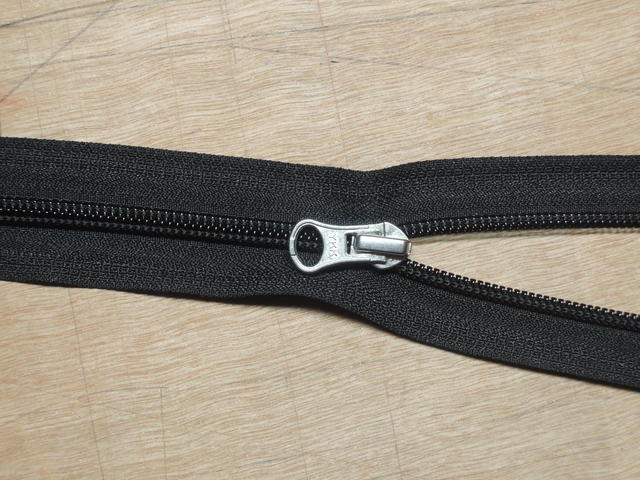Matériaux
Guide détaillé des différents matériaux
_____________________________________________________________________________
Les points clés pour pouvoir comparer les différents tissus :
Le denier : il s'agit du fil utilisé pour la fabrication du tissu. Plus le denier est élevé (20D, 40D, 70D ...) plus le fil utilisé est lourd et meilleure est la résistance du tissu final.
- Nylon : très résistant à l'abrasion et à la déchirure. Absorbe l'humidité et se détend alors de 1 à 3 %.
- Polyester : très résistant aux UV, n'absorbe pas l'humidité, ne se détend pas.
L'enduction : Un enduit est appliqué sur le textile pour rendre le tissu imperméable. Il va grandement impacter la résistance à la déchirure et à la perforation.
- Silicone (sil/sil) : grande résistance à la déchirure, aux UV, très bonne résilience après poinçonnement.
- Mixte Sil / PU : silicone d'un côté, polyuréthane (PU) de l'autre : faible résistance à la déchirure, bonne résistance à la perforation.
_____________________________________________________________________________
Tissus pour toile extérieure :

Imperméable et résistante, la toile extérieure est le point le plus important d'une tente. C'est en cas de mauvais temps qu'elle est le plus sollicitée, et c'est le moment où elle ne doit en aucun cas
vous lâcher. Un accroc sur un tissu doté d'une faible résistance à la
déchirure risque de se propager rapidement, mettant en danger
l'intégrité de la tente. C'est pourquoi nous avons
sélectionné des tissus à double enduction siliconée, présentant une excellente résistance à la
déchirure combinée à une très bonne imperméabilité. C'est aussi l'enduction la plus durable dans le temps.
Ces tissus sont constitué de fibres de polyester ou de nylon (polyamide). Les premiers ont l'avantage d'être très résistant aux UV, tandis que le nylon présente une résistance à la déchirure exceptionnelle. Ce dernier à cependant le désavantage de s'allonger en présence d'humidité, et la tente nécessite alors d'être légèrement retendue après montage. Tous ces tissus sont très souples, donc très compacts et occupent peu de volume. Leur élasticité facilite le montage et s'adapte beaucoup mieux au terrain que les tissus plus rigides.
Nous proposons ces tissus dans différentes versions depuis 2017. Depuis 2023, nous utilisons un nouveau silpoly (polyester avec enduction sil/sil) 30 deniers sélectionné pour ses excellentes qualités. Résistant et durable pour un poids contenu, il ne se détend pas à l'humidité.
Pour les adeptes de l'ultra-léger, nous travaillons également avec un silnylon (nylon haute ténacité avec enduction sil/sil) 20 deniers au rapport résistance / poids exceptionnel. Il se détend légèrement à l'humidité, mais cela restera peu visible sur une toile bien tendue.
Toutes les mesures présentées ici proviennent de nos propres expérimentations.
| Tissu | Poids g/m2 | Résistance à la déchirure | Imperméabilité | Compacité | Élongation à l'humidité | Utilisation |
| Silnylon 20D (option) | 37 | > 7 DaN | > 2.500 mm | +++ | Oui ( < 1% ) | Randonnée ultra-légère |
| Silpoly 30D | 48 | > 7 daN | > 3.000 mm | ++ | Non | Randonnée, Expédition |
| Discontinué : | ||||||
| Silpoly 15D | 33 | > 2.5 DaN | > 2.500 mm | +++ | Non | |
| Silpoly 20D | 43 | > 4.5 DaN | > 2.500 mm | +++ | Non | |
| Silpoly 40D | 60 | > 5 DaN | > 3.500 mm | ++ | Non |
_____________________________________________________________________________
Tissus pour le sol de la chambre intérieure :

Les tissus de sol pour la chambre n'ont pas les mêmes contraintes. N'étant pas soumis à de fortes tensions, ils présentent peu de risques de déchirure. En revanche, ils doivent être très imperméables et très résistants à la perforation. Une forte enduction PU (polyuréthane) de qualité permet ici d'obtenir ces deux caractéristiques.
| Tissu | Poids g/m2 | Imperméabilité | Résistance à la perforation | Compacité | Utilisation |
| Silpoly 20D PU | 49 | > 4000 mm | + | + | Randonnée légère |
| Discontinué : Nylon 40D PU | 65 | > 10 000 mm | ++ | -- | Randonnée, voyage |
| Nylon 70D PU | 93 | > 10 000 mm | +++ | -- | Randonnée, Expédition |
_____________________________________________________________________________
Tissu pour toile intérieure :

Le tissu de la toile intérieure permet de protéger les occupants des courants d'air et des insectes indésirables. On utilisera généralement un tissu coupe-vent et respirant pour la partie basse, et un tissu en moustiquaire pour la partie haute. Pour les pays chauds, ou pour les adeptes de l'ultra-léger, on utilisera un tissu intégralement en moustiquaire. Pour les régions froides, on utilisera majoritairement du tissu pour favoriser la création d'une "bulle de chaleur".
Nous travaillons avec différents grammages permettant de s'adapter aux contraintes de poids et de résistance de chacun.
_____________________________________________________________________________
Fermetures éclair :

Les fermetures éclair sont un des premiers points d'usure. Nous travaillons exclusivement avec des zips de marque YKK de taille #5 ou #8 pour les versions les plus résistantes. Nous n'utilisons pas de fermeture dites "étanche" : elles sont plus lourdes, plus difficile à manipuler et moins durables. L'étanchéité est assurée par un rabat étudié pour éviter aux curseurs de se coincer.
Pour conserver vos fermetures éclair en bon état, évitez de la mettre en contact avec du sable ou de la terre : les grains coincés usent prématurément les dents et le curseur.
_____________________________________________________________________________

